#🧬 🧫
Note
Hi
IT WORKED
dont mind us we're testing something
2 notes
·
View notes
Text





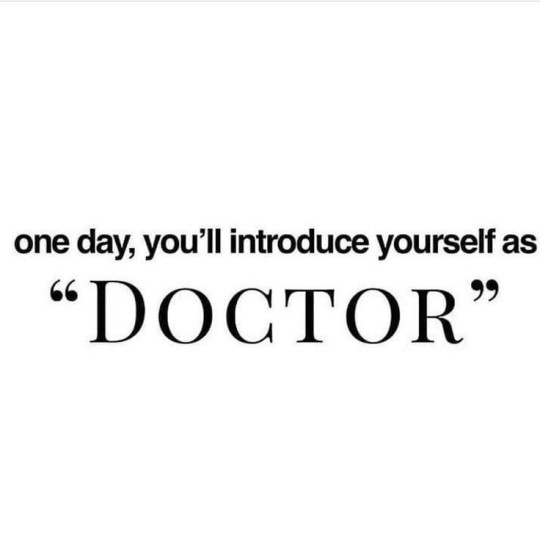




#med school#med student#medical student#medicine#doctors#future doctor#surgeon#future surgeon#biology#dr#dreams#🩺#💉#🩹#🩹🩺#🧬#🦠#🧫🔬
1 note
·
View note
Text
How To Improve Your Sense Of Direction
— By Christine Ro | February 18, 2024
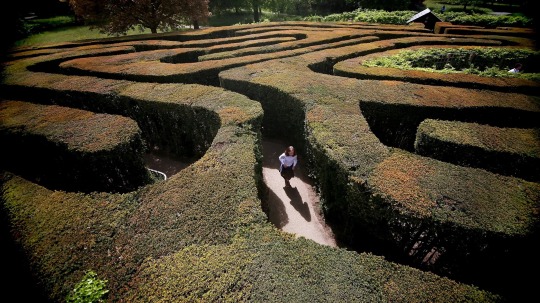
A Young Girl Navigating Hampton Court Maze in 2009. Credit: Getty Images
Some people can strike off on any journey with no guide except their 'Pigeon Senses'. How do they do it? And can this ability be learned?
Ralph Street loves maps. Appropriately for someone with his surname, he studied geography and town planning. And well before that, his parents regularly took him out orienteering – a sport that involves racing between two points using a topographical map and a compass.
"I don't really remember a time before orienteering," Street reflects. "My parents took me orienteering the first week I was born."
Street refers to this as free training, as he now competes internationally as an orienteer, from his home base of Oslo in Norway. But these elite skills have also been useful in everyday life. Street remembers a childhood trip from London to Glasgow, with friends who deferred to him as they realised his knack for getting around the new city. In general, he tries to be diplomatic when he has a difference of opinion with another person about the correct way to go. "I'm usually right, but… we might do their thing first and [then] realise they're wrong."
Other orienteers also report better spatial memory than average. But competitive orienteers have an unusual amount of navigation practice. In fact, the latest neuroscience and psychology research suggests that there are plenty of ways for ordinary people to improve their spatial skills.
Why Some People are Better at Getting Around
Street took up the sport of orienteering at the age of nine. As his experiences suggest, childhood exposure shapes people's comfort and confidence with navigation. Kids having the opportunity to move independently around varied environments matters here. "Experiments with non-human animals suggest that passive motion is not that good because you don't basically pay attention," says Nora Newcombe, a psychology professor at Temple University in Philadelphia.
People who grew up outside cities, or in more spatially complex cities (think Prague rather than Chicago), also appear to be better able to navigate as adults. This is related to the distances travelled and the variety of areas traversed.
Even as adults, "we do have good evidence that people who range more widely around their environment" have better spatial skills, says Newcombe. Going straight back and forth between the home and the workplace doesn't cut it.
In many societies, girls and women have limited opportunities to practice their navigation skills, and this is thought to be a key reason for the myth that women are innately worse at navigation than men. Women sometimes consider themselves to be worse navigators than men even in studies where their performance is the same, due partly to gendered stereotypes. (Older men are the group most likely to overestimate their navigation abilities.)
Overall, gender inequality is associated with gendered differences in navigation ability. This points to the role of culture in creating such differences (or the perception of such differences). "People tend to overestimate the effect of gender, and also they tend to assume that the effect of gender is somehow independent of cultural factors," says Pablo Fernandez-Velasco, a philosopher and cognitive scientist at the University of York and University College London.

One Way Scientists Can Test a Person's Sense of Direction is Using a Kind of Virtual Maze. Credit: Getty Images
Indeed, anthropology research suggests that in more gender-egalitarian societies, gender differences in navigation ability vanish. One relevant study, from 2019, concerns the Mbendjele BaYaka people in the Republic of Congo, who hunt and gather food in the rainforest without using tools like maps or compasses. Research participants were very accurate overall in tests of pointing accuracy, with no differences between men and women. The scientists attributed this to the similar distances travelled (and spatial experience gained) by women and men in this society.
Haneul Jang, a researcher at the Max Planck Institute for Evolutionary Anthropology in Leipzig, Germany, recalls one yam foraging trip with a BaYaka woman, when the two wandered off from the main group and ended up in the middle of nowhere in the forest. Jang's Global Positioning System GPS was unable to help find trails, but her BaYaka companion "immediately looked up, checked the sun and started to walk in one direction, and soon after we found a trail".
Gender also has a cultural influence on whether girls are steered toward certain occupations where navigation is critical. Through pointing and model-building tests, Newcombe's research has found that experienced geologists have higher navigational competence than experienced psychologists. This link to the fields of science, technology, engineering and medicine (Stem) chimes with what Street has noticed in his own community: that many orienteers end up in fields like engineering, maths and physics. (He himself works in IT.)
Related to the effect of education are income and privilege, and global research suggests that a nation's GDP per capita is linked to average navigation ability.
How Brains Handle Navigation
How does all this get processed in the brain? One element is cognitive maps, which are essentially mental models of space. Researchers continue to debate what shape cognitive maps take: for instance, whether humans create representations of maps in their brains to navigate, or if they are graphs.
"The map view basically says that there's an overall common framework that we're trying to fit new information into. And the graph view says, well, we can't really even do that unless the new information is attached to some node in the graph," says Newcombe. This may seem like a very academic distinction, but "it influences our view of whether or not people can combine local spaces and can infer new routes that they have very little information about," she explains.
The cognitive map is believed to reside in the hippocampus, a seahorse-shaped region of the brain involved in memory. Neuroscience research has shown that the structures around the hippocampus also play key roles in orientation. For instance, the entorhinal region has been described as the site of the "goal direction signal".
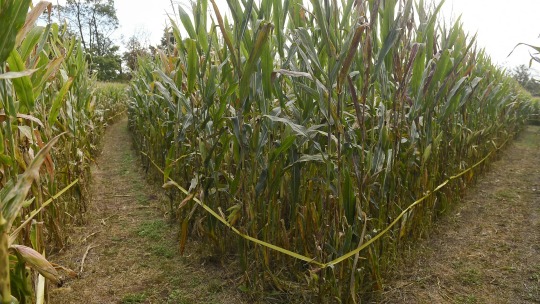
Using Aids Such as Maps May Lead to a Dependence on Navigational Help. Credit: Getty Images
Along with knowing which direction you're facing and the direction of your destination, being able to identify permanent landmarks is implicated in good navigation. This ability to recognise stable landmarks has been linked to activity in the retrosplenial cortex, which forms part of the wrinkly outer layer of the brain.
The brains of highly skilled navigators look different to those of others. One of the best-known examples comes from London cab drivers, who take years to acquire what's reverentially referred to as "The Knowledge". These cabbies' brains show growth in the hippocampus.
Though there are various orientation and direction tests, there's no gold-standard psychology test of navigation skills, especially across cultures. There are major research gaps in how certain cultures view and pass on information about navigation, let alone how those skills might be assessed in some sort of standardised way.
"The traditional [test] is something like a virtual maze," says Fernandez-Velasco, which isn't necessarily adapted to how wayfinding works in different environments and cultures. For instance, while Western navigation tends to privilege visual cues, certain other cultures are more attentive to cues based on smell, hearing, or other senses. "It's hard to capture all of this with the same test, especially with the same test that tends to be very biased towards what we consider good navigation in the Western context and perhaps in the urban context."
To improve the state of knowledge overall – as well as to help preserve types of navigational knowledge at risk of fading away, such as wave piloting in the Marshall Islands – Fernandez-Velasco says there are important questions for navigation research around "how to engage with local collaborators" and "consider non-colonial knowledge systems".
How to Become a Better Navigator
Misconceptions abound about human navigation. "One myth is that you think you cannot improve," Newcombe says. Fernandez-Velasco agrees: while their brains show less plasticity, adults can definitely still learn these skills.
Newcombe is also bothered by people considering navigation abilities irrelevant in the era of GPS. Phone batteries can die and systems can make mistakes, as suggested by accounts of people driving into bodies of water on the advice of their GPS.
Navigational aids like maps, compasses, rock art and stick charts are types of 'cognitive artefacts' – useful in many cases, but they can lead to a dependence. "Sometimes when you're using a cognitive artefact, you're offloading your cognitive abilities to that cognitive artefact," Fernandez-Velasco says of GPS, especially. "That itself might have some negative effect on your ability for navigating over time."
People can train themselves to better notice environmental cues like the wind, Sun and slopes, whether they're in rural or urban settings. "There are cues that a lot of people don't pay attention to," Newcombe says. Pursuits like sailing and scouting can help. Street encourages people to join their local orienteering club.
Not everyone will have the resources or opportunities to participate in these kinds of activities, but some principles can be put into practice while simply walking or wheeling around. For one thing, getting better at navigation requires changing our relationship with risk. "A lot of people aren't willing to explore because they're afraid," Newcombe says. "Lots of adults have quite a lot of spatial anxiety. Basically, they don't want to waste time, but also they are afraid that something bad will happen."

People Who Spend More Time Exploring Their Environment Tend to be Better at Navigating. Credit: Alamy
In a vicious cycle, that anxiety can worsen navigation, as anxiety takes up the mental space needed for spatial tasks. "If you make people anxious in the lab, their ability to navigate seems to deteriorate," says Newcombe. Yet where safe to do, getting lost occasionally serves our sense of direction overall.
While cultural variation makes it difficult to provide universal tips for improving navigation, in general, "the more you move, especially in ways that are slightly challenging, the better you'll become at navigation," Fernandez-Velasco says. "Part of the problem is that people who are bad at navigation sometimes are unconfident and avoid situations that involve navigation, so there could be this negative feedback."
For people who can't imagine wayfinding without a phone app, there are still ways to exercise spatial skills with this tech. Don't let Google Maps always decide your route, Street says.
Change the settings where possible, Newcombe suggests. The default on many apps is that "wherever you're going is straight ahead, which is a terrible way to learn. I totally advocate keeping north on the top all the time." As well, "keep zooming in and zooming out so you can both see the fine-grained information you need to navigate, but also see the landmarks."
Getting an optimal amount of sleep may help too. One global study found that for participants aged 54 and older, sleeping seven hours a night was linked to the best performance in a navigation game.
So while an orienteer in Norway and a forager in the Republic of Congo might have different ways of getting around their environments, the good news is that they – and you – can continue to hone these skills over a lifetime.
0 notes
Text
[🔬 Microscope equipped.]
🧫 e-colin Follow
Another day, another dollar trying to infect this host! Rise and grind pathogens 💸
4 μnotes
🦠 cell287776540923 Follow
might fuck around and reactivate my oncogenes later
💊 mr-t-cell1989
grins at you violently
2,334 μnotes
🦠 natkiller28937 Follow
Who up patrolling the body for cells without MHC Class I molecules 😎😎
🧬 nora-virus Follow
You know what? This isn't okay.
Pathogens work hard to infect host cells and reproduce. It's the only way for them to perpetuate their own existence. Letting pathogens infect host cells is absolutely necessary to prevent their total extermination. Killing is wrong! Immune cells need to learn to be tolerant of other microbes instead of destroying us just because we want to seize and consume this body's resources.
💊 mr-t-cell1989
KUNG
🦠 natkiller71642 Follow
POW
🩸 neutro-phil2
PENIS
30 trillion μnotes
34K notes
·
View notes
Text
I have so much beef with physicists. As a biochem major being forced to take physics rn I just read the words "ignore significant figures" on a homework problem and I want to scream. A homework problem I am doing at 1am, mind you, bc I'm also not good at nor do I like physics and the homework is basically its own part time job.
0 notes
Text
╒ TAG DUMP: INTERACTIONS ╕
#└ the most logical researcher ┐📚┌ giannis megalos ┘#└ buddies in biology ┐🧫┌ kyveli argyris ┘#└ bitter gene manipulator ┐🧬┌ mihail kontos ┘
0 notes
Text
WERE YOU SENT BY SOMEONE 🚶♂️WHO WANTED ME DEAD 😵 DID YOU SLEEP 💤 WITH A GUN 🔫 UNDERNEATH OUR BED 🛌 WERE YOU WRITING ✍️ A BOOK 📖 WERE YOU A SLEEPER CELL 🧫 SPY 🕵️♂️ IN FIFTY 5️⃣0️⃣ YEARS WILL ALL THIS BE DECLASSIFIED🔎 AND YOU’LL CONFESS WHY 🤷♂️ YOU DID IT AND I’LL SAY 🗣️ GOOD RIDDANCE 👋 ‘CAUSE IT WASN’T SEXY 🫦 ONCE IT WASN’T FORBIDDEN 🚫 I WOULD’VE DIED 🥀 FOR YOUR SINS ☦️ INSTEAD I JUST DIED INSIDE 😫 AND YOU 🫵 DESERVE PRISON 🚔 BUT YOU WON’T GET TIME ⏰ YOU’LL SLIDE INTO INBOXES 📥 AND SLIP THROUGH THE BARS 🍻 YOU CRASHED 💥 MY PARTY 🥳 AND YOUR RENTAL CAR 🚗 YOU SAID NORMAL GIRLS 👩 WERE BORING 👎 BUT YOU WERE GONE BY THE MORNING 🌅 YOU KICKED 🦵 OUT THE STAGE LIGHTS 💡 BUT YOU’RE STILL PERFORMING 🎙️ and in plain sight you hid 🫣 but you are what you did 🖕 and i’ll forget you 💭 but i’ll never forgive the smallest 🤏 man 🧍♂️ who ever lived 🧬
#bitch pack gets to see this twice#the tortured poets department#taylor swift#tw caps#ttpd#carley’s soliloquy#*greatest hits
2K notes
·
View notes
Text
*
#just got sad happy heart get stomp stomped on and go flutter pop bc i thought abt my childhood crush 👉👈#havent seen since like 5th grade but i just looked them up and found their linkedin lmfao and they zlive in a dream city of mine AND they#work in environmental conservation what a DREAM#and they’re gorg and like UGH the urge to……. move … jk but the urge to reach put n be like#hi its me ur twins bestie do u remeber me from like 13 years ago LMAO#and the sad part is their linkdin said we went to the same university 🤥 im depressed#at the same time. in the same graduating class#we were just two different types of stem peeps#them: 🌲 🌳🐻🏕️🦎🪵🪨🛶⛰️#me: 💉💊🏥👩⚕️🧫🧬🧪🔬🩸🩻#anyway#</3#not me over here dreaming of meeting up with them now lol#the cons of going to a large university and graduating at the same time as 10k other people rip
0 notes
Text


━━┈ ౯𖤐༝ 「 DOKTOR 」 ⌿ 「 PERMITS 」


0 notes
Photo
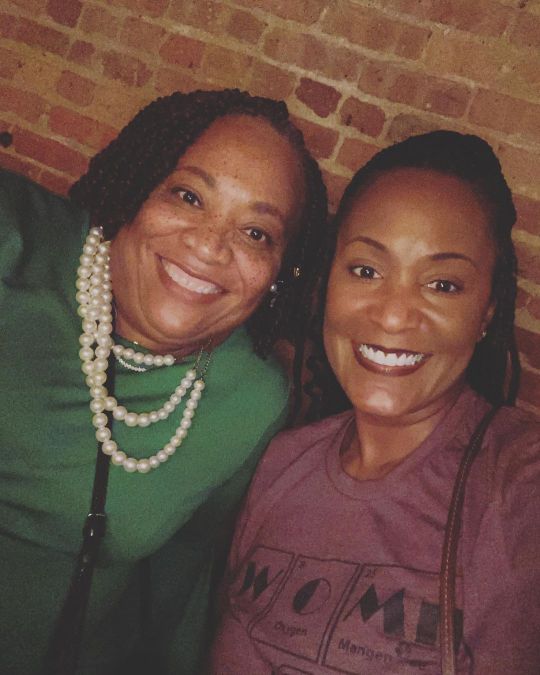
Enjoyed dinner with these ladies!#WomanInSTEM🥼🧪🧫🧬🔬 #AACC2022 #BlackGirlMagic 👩🏽⚕️ (at Sunda) https://www.instagram.com/p/CgYccOrNMZiLA3VSVf7xKM79ZJP6eai1HEj-IE0/?igshid=NGJjMDIxMWI=
0 notes
Text








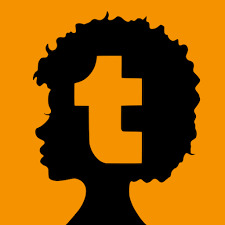

Reblog for science 🧫🧬🔬🧪🥼🔭⚗️🧑🔬
#tumblr polls#polls#poll#tumblr update#tumblr app#tumblr icons#new tumblr logo#new tumblr icon#tumblr logo#new icon#app icon#app logo#app update#icon update#mobile app#tumblr poll#variety is the spice of life#tumblr icon
753 notes
·
View notes
Text
Improving Climate Predictions By Unlocking The Secrets of Soil Microbes
— By Julie Bobyock, Lawrence Berkeley National Laboratory | February 5, 2024
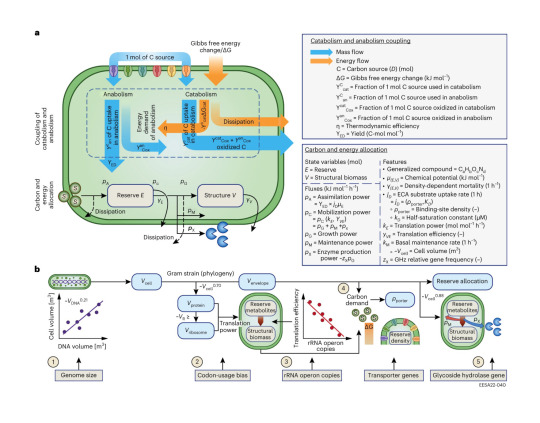
Overview of DEBmicroTrait. Credit: Nature Microbiology (2024). DOI: 10.1038/s41564-023-01582-W
Climate models are essential to predicting and addressing climate change, but can fail to adequately represent soil microbes, a critical player in ecosystem soil carbon sequestration that affects the global carbon cycle.
A team of scientists led by the Department of Energy's Lawrence Berkeley National Laboratory (Berkeley Lab) has developed a new model that incorporates genetic information from microbes. This new model enables the scientists to better understand how certain soil microbes efficiently store carbon supplied by plant roots, and could inform agricultural strategies to preserve carbon in the soil in support of plant growth and climate change mitigation.
"Our research demonstrates the advantage of assembling the genetic information of microorganisms directly from soil. Previously, we only had information about a small number of microbes studied in the lab," said Berkeley Lab Postdoctoral Researcher Gianna Marschmann, the paper's lead author.
"Having genome information allows us to create better models capable of predicting how various plant types, crops, or even specific cultivars can collaborate with soil microbes to better capture carbon. Simultaneously, this collaboration can enhance soil health."
This research is described in a new paper that was recently published in the journal Nature Microbiology. The corresponding authors are Eoin Brodie of Berkeley Lab, and Jennifer Pett-Ridge of Lawrence Livermore National Lab, who leads the "Microbes Persist" Soil Microbiome Scientific Focus Area project.
Seeing the Unseen: Microbial Impact on Soil Health and Carbon
Soil microbes help plants access soil nutrients and resist drought, disease, and pests. Their impacts on the carbon cycle are particularly important to represent in climate models because they affect the amount of carbon stored in soil or released into the atmosphere as carbon dioxide during the process of decomposition.
By building their own bodies from that carbon, microbes can stabilize (or store) it in the soil, and influence how much, and for how long carbon remains stored belowground. The relevance of these functions to agriculture and climate are being observed like never before.
However, with just one gram of soil containing up to 10 billion microorganisms and thousands of different species, the vast majority of microbes have never been studied in the lab. Until recently, the data scientists had to inform these models came from only a tiny minority of lab-studied microbes, with many unrelated to those needing representation in climate models.
"This is like building an ecosystem model for a desert based on information from plants that only grow in a tropical forest," explained Brodie.
The World 🌎 Beneath Our Feet 🦶🦶
To address this challenge, the team of scientists used genome information directly to build a model capable of being tailored to any ecosystem in need of study, from California's grasslands to thawing permafrost in the Arctic. With the model using genomes to provide insights into how soil microbes function, the team applied this approach to study plant-microbiome interactions in a California rangeland. Rangelands are economically and ecologically important in California, making up more than 40% of the land area.
Research focused on the microbes living around plant roots (called the rhizosphere). This is an important environment to study because, despite being only 1-2% of Earth's soil volume, this root zone is estimated to hold up to 30-40% of Earth's carbon stored in soils, with much of that carbon being released by roots as they grow.
To build the model, scientists simulated microbes growing in the root environment, using data from the University of California Hopland Research and Extension Center. Nevertheless, the approach is not limited to a particular ecosystem. Since certain genetic information corresponds to specific traits, just as in humans, the relationship between the genomes (what the model is based on) and the microbial traits is transferable to microbes and ecosystems all over the world.
The team developed a new way to predict important traits of microbes affecting how quickly they use carbon and nutrients supplied by plant roots. Using the model, the researchers demonstrated that as plants grow and release carbon, distinct microbial growth strategies emerge because of the interaction between root chemistry and microbial traits.
In particular, they found that microbes with a slower growth rate were favored by types of carbon released during later stages of plant development and were surprisingly efficient in using carbon—allowing them to store more of this key element in the soil.
The Root of the Matter
This new observation provides a basis for improving how root-microbe interactions are represented in models, and enhances the ability to predict how microbes impact changes to the global carbon cycle in climate models.
"This newfound knowledge has important implications for agriculture and soil health. With the models we are building, it is increasingly possible to leverage new understanding of how carbon cycles through soil. This in turn opens up possibilities to recommend strategies for preserving valuable carbon in the soil to support biodiversity and plant growth at scales feasible to measure the impact," Marschmann said.
The research highlights the power of using modeling approaches based on genetic information to predict microbial traits that can help shed light on the soil microbiome and its impact on the environment.
#Biology 🧬 🧪#Ecology#Cell & Microbiology 🧫#Nanotechnology#Physics#Earth 🌍#Astronomy 🪐 🔭 & Space#Chemistry 🧪 ⚛️#Other Sciences#Medicine 💊#Technology#Phys.Org#Julie Bobyock | Lawrence Berkeley National Laboratory 🥼 🧪#Almeda County | California | USA 🇺🇸
0 notes
Text
CELLULAR BIOLOGY AESTHETIC BIOS (like/reblog if use)
ʚ💆♀️🌈𝕤𝕖𝕝𝕖𝕔𝕥𝕚𝕧𝕖𝕝𝕪 𝕡𝕖𝕣𝕞𝕖𝕒𝕓𝕝𝕖✨🧪👌ɞ
🥺🌸…ʲᵘˢᵗ ᵃ ˢᵐᵃˡˡ ᵗᵒʷⁿ ᵖʳᵒᵏᵃʳʸᵒᵗᵉ…🙈🧫
➺🌿🪴 𝙖 𝙘𝙝𝙡𝙤𝙧𝙤𝙥𝙡𝙖𝙨𝙩 𝙨𝙚𝙧𝙫𝙞𝙣𝙜 𝙘𝙪𝙣𝙩 🌞🌱➺
♫☞🧬 ɴᴜᴄʟᴇᴜꜱ ɪꜱ ᴡʜᴇʀᴇ ɪᴛ’ꜱ ᴀᴛ! 🧬☜☆
❀۪۪̥˚┊👯♀️❛ 𝚐𝚘𝚕𝚐𝚒 𝚐𝚒𝚛𝚕 𝚜𝚚𝚞𝚊𝚍 ❜👯♀️┊˚ ͙۪۪̥◌ ❀
꒰👊🔋⚡️𝖕𝖔𝖜𝖊𝖗𝖍𝖔𝖚𝖘𝖊 𝖔𝖋 𝖙𝖍𝖊 𝖈𝖊𝖑𝖑⚡️🔋👊꒱
2K notes
·
View notes
Text
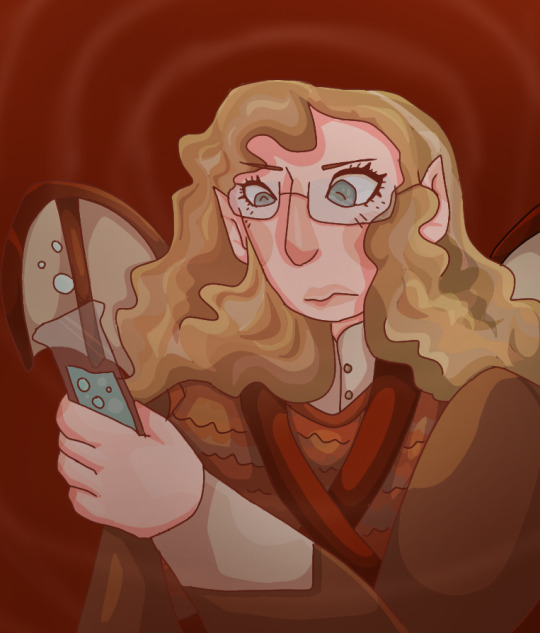
as brutal and cruel as she is science 🔬🧪⚗️🧫🧬
#actually pretty happy with how this one turned oit#kae doodles#the mechanisms#raphaella la cognizi#image id
135 notes
·
View notes
Note
I love demi/ace coded Miguel ! Thank you for that. Perhaps a request for more of that with scientist reader who works in spider society 🧬🔬🧫🧪
aaaaaa np!!! I love demi/ace coded Miguel too! Coming right up~
headcanons: Miguel o'hara x fellow scientist!reader

Imagine you knew about the secret work your superior, Dr. Miguel O'hara did-he wasn't just a geneticist
He was your Nueva York's one and only Spider-Man.
Or, he was.
In fact, when he wasn't in the lab, he was commanding an elite strike force of Spider-Men and Women.
Until recently, little did you know, a researcher yourself, worked alongside him in the upkeep of this society.
Imagine at first, you're pretty afraid of Miguel. I mean, be fr have you seen this man and his anger issues?
Imagine it being a complete accident you discovering Miguel's role as Spiderman 2099.
Imagine despite Miguel showing you grave patience, you notice when he returned to the lab one day, he was absolutely seething.
Imagine noticing underneath his lab coat, he's not wearing his usual scrubs, or even the sophisticated business casual shirt and tie...
It looked more like a... holographic, skintight jumpsuit?
How badly you wanted to make a joke, but decided to save it from how pissed off your superior was...
"Hey... erm... Dr. O'Hara?" You had finished your lab reports for the day early, hopefully having that ticked off the list would put him a little bit at ease.
Imagine him swiftly turning around, his handsome face concealed by a mask... A mask familiar... too familiar.
Miguel realizes what he's revealed to you immediately.
..."Mierda..."
..."You... You're-"
"Don't."
Imagine Miguel does eventually fill you in... only after you've sworn yourself to secrecy. He's more on edge than normal now...
Imagine, that unbeknownst to you... Miguel genuinely feels bad... He never intended on dragging you, the poor, new researcher into this mess...
He doesn't always like what he has to do as spider-man... and the last thing he wanted to do was pull in an innocent, unknowing person into his role...
But then again, you did have some questions answered about your place of work... The experiments... The... everything. Things made sense.
Imagine that at first, you don't necessarily go out of your way to interact with the spider society you now know you're diligently working behind the scenes for.
Eventually you do find the confidence and security to say hi to the Spider-People... And you immediately see why they get on Miguel's nerves.
They're all so upbeat and friendly... and they all thought they were the "Funny one."
Imagine, in the end, this whole debacle brings you and your superior closer. Sharing coffee, Miguel actually opening up to you, and him not being afraid to argue and banter little bit with you-no longer treating you like a child to protect. You're even calling him Miguel instead of Dr. O'Hara.
Miguel's surprised of how well you took the whole thing. And ngl? He's grateful for that. He's grateful for you. He never anticipated he could be himself with you, but here you are.
Miggy's got a work friend :) and he's pumped.

#miguel o'hara#miguel o'hara fanfiction#miguel o'hara x reader#miguel spiderverse#miguel x reader#atsv miguel#spiderman 2099 x reader#across the spiderverse#x aroace reader#x asexual reader#spiderman atsv#spiderman x reader#spiderman 2099#spiderman#platonic x reader#my writing#writeblr#platonic Miguel o'hara x reader#spiderman 2099 x you
70 notes
·
View notes